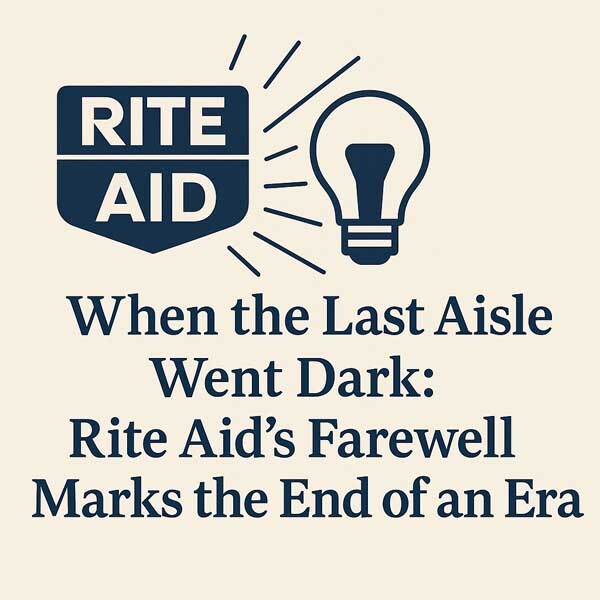News Staff![]() Oct 5
Oct 5
792 views 0 Comments 0 Likes

When the Last Aisle Went Dark: Rite Aid’s Farewell Marks the End of an Era
Rite Aid, once a familiar stop on America’s main streets and shopping centers, has quietly closed the doors to its final stores after 63 years in business. What began as a single pharmacy in Scranton, Pennsylvania, grew into one of the largest drugstore chains in the nation—known not only for prescriptions but for convenience, community, and a scoop of Thrifty ice cream on the way out. Now, that long chapter has ended.
The company confirmed that all 89 remaining stores have closed, marking the conclusion of a slow and painful retreat. Its website remains active only for customers to access prescription records or transfer medications. The announcement follows Rite Aid’s second bankruptcy filing in less than two years, after years of mounting debt, fierce competition, and legal challenges tied to opioid-related claims. At its height, Rite Aid operated over 4,000 locations nationwide; today, its presence has been reduced to a historical footnote.
Rite Aid’s fall wasn’t sudden—it was the culmination of years of financial erosion. The chain carried more than $4 billion in debt while competing against giants like CVS and Walgreens, who had the advantage of scale, diversified health services, and stronger digital infrastructure. The pharmacy retail industry itself has been under siege, squeezed by low profit margins, increased regulation, and the migration of customers toward online and mail-order services. For Rite Aid, the cost of doing business simply became unsustainable.
Even after shedding $2 billion in debt through its 2023 restructuring, the company’s recovery proved short-lived. By early 2025, its financial pressures resurfaced, compounded by rising costs and shifting consumer habits. The decision to close its last stores was less about choice and more about inevitability. Most of Rite Aid’s remaining pharmacies and prescription files have since been absorbed by competitors including CVS, Walgreens, Albertsons, and Kroger.
The closures are especially felt in the Coachella Valley, where Rite Aid once had multiple locations serving Palm Springs, Cathedral City, Indio, Palm Desert, and Desert Hot Springs. For many residents—particularly seniors and those without reliable transportation—the loss of a nearby pharmacy is more than an inconvenience; it can affect access to essential medication and health care advice. Communities that already struggled with limited healthcare infrastructure now face longer wait times and fewer options, as surviving pharmacies absorb the overflow.
Local residents have expressed concern over longer lines, reduced staffing, and the growing sense that pharmacy service is becoming less personal and more transactional. For healthcare providers in the valley, the closures create additional challenges, as prescription fulfillment becomes more fragmented and some patients delay refills or switch pharmacies mid-treatment.
The fallout also extends to local employment. Dozens of former Rite Aid workers—from pharmacists and technicians to store clerks—are now seeking new opportunities. While some have been hired by competing chains, others face uncertain prospects as retail pharmacy consolidates and automation expands.
Rite Aid’s disappearance is part of a broader transformation of American healthcare retail. CVS is in the midst of closing hundreds of stores, and Walgreens has announced that nearly a quarter of its locations are no longer profitable. As the industry leans toward consolidation, online services, and home delivery, traditional neighborhood pharmacies are slowly fading into memory.
For the Coachella Valley and countless other regions, Rite Aid’s departure feels deeply personal. It’s the loss of a familiar face in the community—a place where prescriptions were filled, family photos were printed, and an ice cream cone could brighten a day. In the end, the closing of Rite Aid is more than a corporate collapse; it’s the quiet dimming of a once-trusted beacon of everyday life.

At Desert Local News, connections are everything. We're not just another social networking platform—we're a lively hub where people from all walks of life come together to share stories, spark ideas, and grow together. Here, creativity flourishes, communities grow stronger, and conversations spark global awareness.
Comments